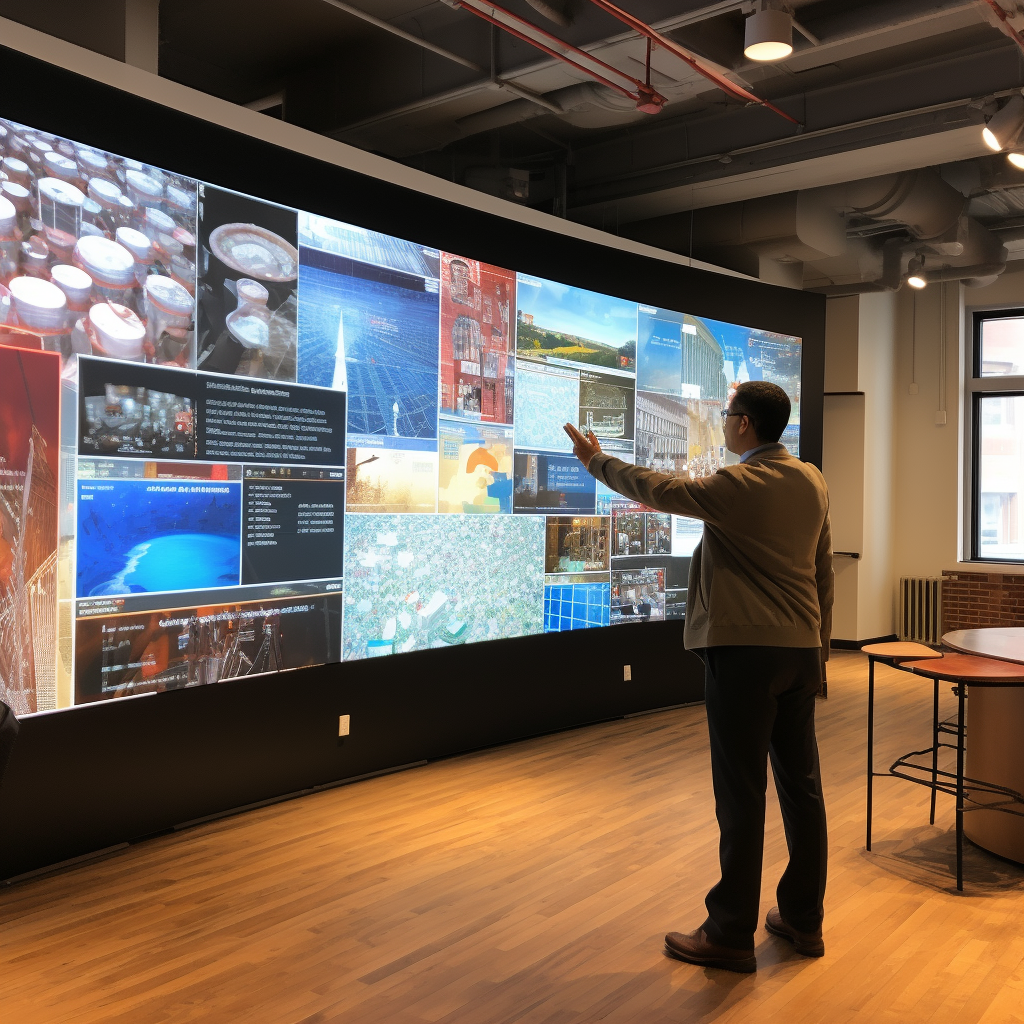In the ever-evolving landscape of education, technology has become an essential aspect of teaching and learning. One such innovation holds immense potential: video walls and large display setups. In this blog post, we’ll explore how educational establishments can harness the power of video walls and large displays to elevate their teaching, engage students, and create a dynamic learning environment.
- Visual Impact and Engagement: The saying “a picture is worth a thousand words” couldn’t be truer in an educational context. Video walls and large displays offer a larger-than-life canvas for presenting information, images, videos, and interactive content. This enhanced visual impact instantly captures students’ attention, making even complex subjects more accessible and engaging. Professors can utilize these displays to showcase intricate diagrams, 3D models, and live demonstrations, fostering a deeper understanding of the material.
- Collaborative Learning: Interactive video walls and large displays promote collaborative learning by encouraging group discussions and projects. Students can work together to solve problems, analyze data, and brainstorm ideas on a shared visual platform. This fosters a sense of teamwork, communication, and critical thinking, which are crucial skills for success in the modern world.
- Real-world Simulations: Video walls can be used to create immersive simulations that transport students to different environments, eras, or scenarios. Whether it’s exploring historical sites, dissecting a virtual frog, or observing the inner workings of a complex machine, these visual tools offer a hands-on experience that bridges the gap between theoretical concepts and practical application.
- Dynamic Presentations: Gone are the days of static PowerPoint presentations. Video walls enable educators to craft dynamic and interactive presentations that hold students’ attention. Incorporating multimedia elements such as videos, animations, and live web feeds can transform traditional lectures into captivating multimedia experiences.
- Distance Learning and Remote Collaboration: In an era where remote and hybrid learning models have become more prevalent, video walls can facilitate seamless communication and collaboration between students and instructors across different locations. Live-streamed lectures, virtual office hours, and collaborative projects can all be enhanced through the use of large display setups.
- Showcasing Student Work: Video walls can serve as a platform for students to exhibit their projects, research findings, and creative endeavors. This not only boosts their confidence but also enables the entire academic community to appreciate and learn from their peers’ achievements.
- Specialized Training and Research: For institutions offering specialized training in fields like medicine, engineering, and design, video walls can play a pivotal role. Surgeons can dissect virtual bodies, engineers can analyze complex machinery, and architects can visualize intricate designs in real-time, all leading to a deeper understanding and mastery of their respective subjects.
- Data Visualization: In disciplines that involve extensive data analysis, video walls offer an unparalleled advantage. Students can explore large datasets, identify patterns, and draw insights through interactive visualizations, enhancing their analytical skills.
For these reasons and more, video walls and large display setups are being adopted by academic institutions around the world for enhancing teaching, learning, and collaboration. Three10’s solution has been powering such environments at places like the University of Innsbruck and many more. Its solution is unique in that it makes these screens accessible to any user with a simple drag and drop functionality. In addition, it streamlines the infrastructure set up. If you’re interested in learning more about how academic institutions are using videowalls in tandem with Three10, please reach out through the Contact Us page.
